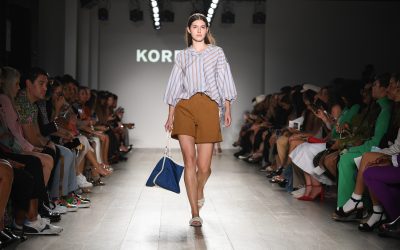In attempt to fix what many have addressed as New York Fashion Week‘s “broken system,” the Council of Fashion Designers of America have banded together to try and formulate both an understanding and control over the confusion that has thrown a wrench in the once cohesive bi-yearly event.
When Diane Von Furstenberg, designer and chairman of the CFDA, looked further into the issues, she narrowed down their stimulus of confusion to two dependent variables; the rise of social media and its affect on fast fashion. “Fast fashion” is a contemporary industry term used by retailers to describe the quick turnover time it takes looks from the runways to make their way into brick and mortar/ online purchasing platforms. Fast Fashion clothing collections are often cultivated from the most recent trends from fashion weeks in both spring and autumn.
This is where it becomes tricky. The fashion industry has seen an added group of retailers become present in aiding consumers’ desires to purchase what they see on the runways, making the gap of accessibility a lot more narrow. The problem for designers? Their ideas are being produced at a quicker rate of production than their own, so they lose out on consumer sales as well as credit for their creations.
“We have designers, retailers, and everybody complaining about the shows. Something is not right anymore because of social media, people are confused,” says Von Furstenburg in a recent Women’s Wear Daily article. Conversely, consumers are upset when they see runway looks presented on one of many social media platforms, but cannot purchase them for potentially up to six months..
Being that this confusion centers around many different consumer patterns, Von Furstenburg and the CFDA have come to a possible solution for the fashion industry at large, turning these bi-yearly shows into consumer facing events rather than industry events. In order for this to be done, designers will not be showcasing future collections in order to make a forecast of what is to come. As an alternative they will present current in-store collections.
Study is now being conducted on this suggested solution. BCG will now survey and analyze industry experts to explore trials and errors of this potential shift to shows that are more closely aligned with current production schedules and retail deliveries.
Although Von Furstenburg and her team haven’t pinpointed exactly how the new system might work, they feel it will allow designers to cultivate smaller showroom presentations, as well as appointments with retailers and press in order to place orders on a collection six months out. This shift may be a solid approach and may allow designers to continue having their bi-yearly professional shows displaying all in-season merchandise.
In a world where social media and the worldwide web provide numerous ways for consumers to stay in touch with the latest trends and forecasts, many designers and retailers are on board with exploring a new approach to industry events. Hopefully these prospective creative solutions will be able to satisfy consumer needs as well as forecast the future of fashion.
-by Meghan Fazio














